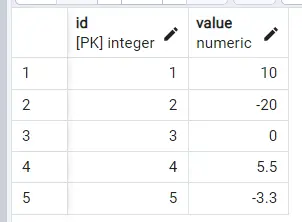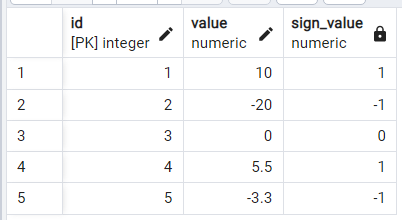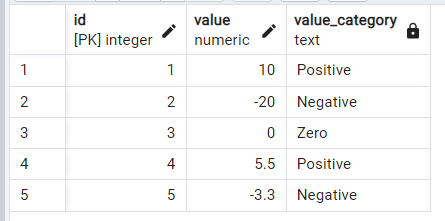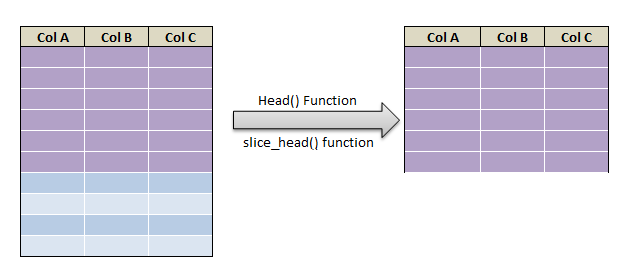In PostgreSQL, you can use the SIGN() function to determine the sign of a numeric value. This function returns. In order to get sign of the column value in postgresql we use SIGN() function. SIGN() Function in gets negative (-1) or positive value (1).
Let’s see how to
- Get basic Sign of numeric value
- Get Sign of the column value in PostgreSQL – SIGN()
- Practical use case on how to use sign() function
- Assign keyword like Positive, Negative and Neutral based on the column value sign in PostgreSQL
With an example for each
Syntax:
SIGN(numeric_expression)
numeric_expression: The number for which you want to determine the sign.
Example of SIGN() function:
Example 1: Basic Usage
To get the sign of a positive, negative, and zero value:
SELECT
SIGN(9) AS sign_positive,
SIGN(-9) AS sign_negative,
SIGN(0) AS sign_zero;
Output:
Get Sign of the column in PostgreSQL table:
We use table sign_demo
SELECT *,SIGN(value) as sign_value from SIGN_DEMO
We have created a column and stored the Sign value of the column “value”
Practical Use Cases
Example: Categorizing Values by Sign
In PostgreSQL You might want to categorize values into positive, negative, and zero groups based on their sign: IT will assign column vales as Negative to minus sign and Positive keyword to positive sign and Neutral or Zero keyword where Zero is present.
SELECT
id,
value,
CASE
WHEN SIGN(value) = 1 THEN 'Positive'
WHEN SIGN(value) = -1 THEN 'Negative'
ELSE 'Zero'
END AS value_category
FROM SIGN_DEMO;
In this example, the CASE statement is used to create categories based on the sign of each value.
Output:








